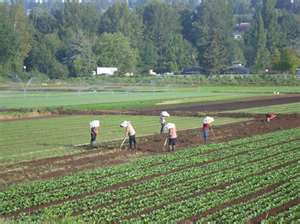Change and Continuity in Humanities
Friday, March 23, 2012
Creators of the blog
This blog is created by Joshua Leong (15), Lee Yong Lin (14), Lee Jee Hoon (13), Marcus (16) from S203, year 2012
Civilisation of China
China(Based off the Asian Civilisation Museum):
Although the dominant state ideology, Confucianism, emphasises on the basic goodness of human nature and assumes that the human virtues will protect the interests of the society and individuals. China’s governance has constantly relied of penalties. Despite it’s human emphasis, the Chinese culture puts the group before the individual as the group’s interests could be confused with the interests of rules who were assumed to have the mandate of heaven. Such social values could be misinterpreted and abused, causing unnecessary suffering.
 |
| Symbol of confucianism |
 |
| Confucious |
Home of the ceramics:
China is one of the countries where colored pottery first appeared. Gansu and Qinghai Province on the upper reaches of the Yellow River has yielded more colored pottery wares than any other places. Ruins of the lower type of culture at Shiling in Minhe County, Qinghai Province, clearly demonstrate the degree of development of pottery making at that time. In most cases, the method of applying clay strips was discovered, according to which clay was first shaped into long strips and then piled up from the bottom to create a rough base, on which adjustment and further shaping were done. On the surface of some pottery wares colored painting is visible. Most colored pottery wares have a blue color, although red and white colored ones have also been unearthed. The majority of the patterns on the pottery wares are geometric. A pottery basin unearthed at Upper Sunjiazhai, Datong, in Qinghai Province in 1973, had a dark red surface. Below the basin's rim are painted in blue three groups of dancers with five dancers in each group. They have the same costume and hairstyle, and they are hand in hand, dancing to the same beat, bringing to the present the image of ancient people dancing and singing after work some 5,000 years ago.
 |
| Ceramics |
 |
| Ceramics |
 |
| Ceramic bowls and pots |
Farming and sericulture:
China was one of the first countries to see the emergence of agriculture. Finds at the ruins of the Hemudu Culture in Yuyao and the site of the matriarchal society at Banpo Village near Xi'an, which all date back 6,000 to 7,000 years, include rice, millet and spade-like farm tools made of stone or bone. The spade was the most typical farm tool of that time. The Hemudu Culture site in particular yielded a large number of spade-like tools made from animals' shoulder blade bones. Among the artifacts from the sites of the Peiligang-Cishan Culture in north China, millstones for husking millet are quite common. Archaeological studies have proved that the area of Hemudu at the time was covered under large tracts of marshland, providing suitable conditions for cultivating rice and developing farming. At the sites, indications of rice cultivation are in great abundance, as piles of rice grains, husks, stalks and leaves have been found there. In some places, the piles were one meter high. Examinations reveal that the rice grown at Hemudu was long-grained non-glutinous rice, and is the earliest example of artificially-cultivated rice that has been found in China to date. This verifies that China was one of the key areas in the world where rice cultivation originated and reflects the advance of farming along the middle and lower reaches of the Yangtze River during the New Stone Age.
 |
| Acient spades |
 |
| Farming/Semiculture |
Thursday, March 22, 2012
Geograyphy - Singapore River
I Prime Minister Lee Kwan Yew began the Clean Rivers Project which was initiated by Ministry of Environment in October 1997. It was a $200-million project aimed to decrease the amount of water pollution in Singapore in 10 years time. Tons of rubbish had to be cleared and the whole landscape of the Singapore River was to be changed. 31 August 1983, the last 300 lighters were moved to another location, Pasir Panjang. Those lighters made up the riverscape. The Singapore River became more peaceful and calm.
Way before 1997, the river was a boatyard. The name of this boatyard was Hallpike's Boatyard. The area around the river were always noisy as boats were being repaired there. The noise made was so loud that it could still be heard from the court house which is currently the old Parliament House. This was the reason the court house was moved further down the river. Today, the boatyard no longer exist. The Old Parliament House is now the oldest surviving building in Singapore.
Fort canning hill is part of the landscape of Singapore River for years. In the 1820s, it was believed to be the resting place of Malay kings and many ghosts. Sir Standford Raffles, amazed by this rumor, stayed in a bungalow facing the Singapore River.
Raffles Place is where business houses were set up and became a place of attraction especially to Europeans. Firms from all over the world were set up here. Even famous firms like the large Japanese shipping company Nippon.
Subscribe to:
Posts (Atom)